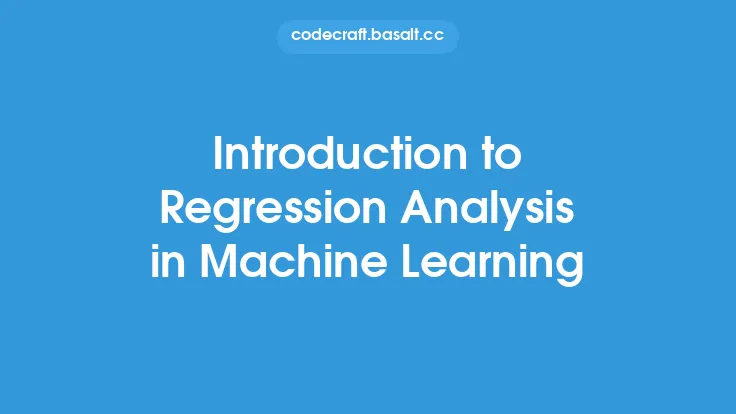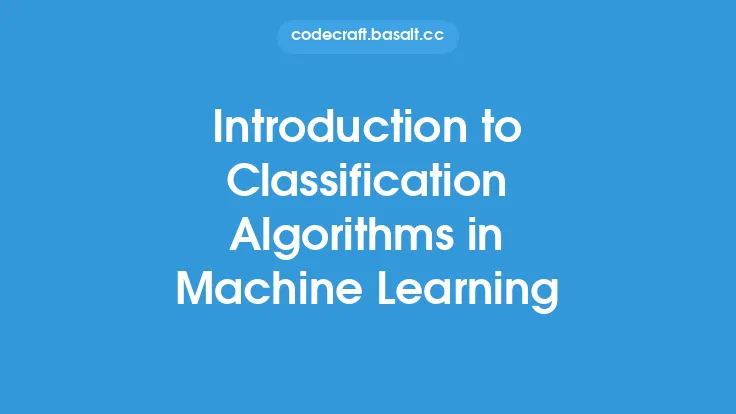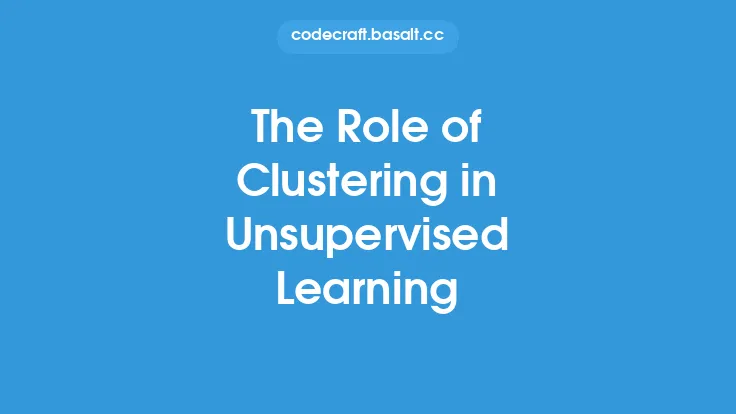Clustering techniques are a fundamental component of machine learning, allowing us to group similar data points into clusters based on their characteristics. This unsupervised learning approach enables us to identify patterns, relationships, and structures within the data without prior knowledge of the expected outcomes. Clustering has numerous applications in various fields, including customer segmentation, gene expression analysis, image segmentation, and anomaly detection.
What is Clustering?
Clustering is a type of unsupervised machine learning algorithm that aims to partition the data into clusters based on their similarities. The goal is to identify groups of data points that are more similar to each other than to data points in other clusters. Clustering algorithms typically rely on distance metrics, such as Euclidean distance, Manhattan distance, or cosine similarity, to measure the similarity between data points. The choice of distance metric depends on the nature of the data and the specific clustering algorithm used.
Types of Clustering
There are several types of clustering techniques, each with its strengths and weaknesses. Some of the most common types of clustering include:
- Partition-based clustering: This type of clustering divides the data into a fixed number of clusters, where each data point belongs to exactly one cluster. Examples of partition-based clustering algorithms include K-Means and K-Medoids.
- Hierarchical clustering: This type of clustering builds a hierarchy of clusters by merging or splitting existing clusters. Hierarchical clustering algorithms can be either agglomerative (bottom-up) or divisive (top-down).
- Density-based clustering: This type of clustering groups data points into clusters based on their density and proximity to each other. Examples of density-based clustering algorithms include DBSCAN and OPTICS.
- Grid-based clustering: This type of clustering divides the data space into a finite number of cells, where each cell represents a cluster. Grid-based clustering algorithms are particularly useful for large datasets.
Clustering Algorithm Components
A clustering algorithm typically consists of several components, including:
- Distance metric: This is used to measure the similarity between data points. Common distance metrics include Euclidean distance, Manhattan distance, and cosine similarity.
- Clustering criterion: This is used to evaluate the quality of the clusters. Common clustering criteria include the sum of squared errors (SSE) and the silhouette coefficient.
- Initialization method: This is used to initialize the clustering algorithm. Common initialization methods include random initialization and K-Means++.
- Termination condition: This is used to determine when the clustering algorithm should stop. Common termination conditions include a fixed number of iterations and convergence of the clustering criterion.
Clustering Evaluation Metrics
Evaluating the quality of the clusters is a crucial step in the clustering process. Some common clustering evaluation metrics include:
- Silhouette coefficient: This measures the separation between clusters and the cohesion within clusters.
- Calinski-Harabasz index: This measures the ratio of between-cluster variance to within-cluster variance.
- Davies-Bouldin index: This measures the similarity between clusters based on their centroid distances and scatter within the clusters.
- Cluster validity index: This measures the overall quality of the clusters based on various criteria, such as compactness, separation, and density.
Applications of Clustering
Clustering has numerous applications in various fields, including:
- Customer segmentation: Clustering can be used to segment customers based on their demographic, behavioral, and transactional data.
- Gene expression analysis: Clustering can be used to identify co-expressed genes and understand their functional relationships.
- Image segmentation: Clustering can be used to segment images into regions of similar pixel values.
- Anomaly detection: Clustering can be used to identify outliers and anomalies in the data.
Challenges and Limitations
Clustering algorithms can be challenging to apply in practice, particularly when dealing with large and complex datasets. Some common challenges and limitations include:
- Choosing the right algorithm: With so many clustering algorithms available, choosing the right one for a particular problem can be difficult.
- Selecting the optimal number of clusters: Determining the optimal number of clusters is a challenging problem, particularly when the number of clusters is unknown.
- Dealing with noise and outliers: Clustering algorithms can be sensitive to noise and outliers, which can affect the quality of the clusters.
- Interpreting the results: Clustering results can be difficult to interpret, particularly when the clusters are not well-separated or when the data is high-dimensional.
Future Directions
Clustering is an active area of research, with many new algorithms and techniques being developed. Some future directions include:
- Developing more robust clustering algorithms: Clustering algorithms that can handle noise, outliers, and high-dimensional data are needed.
- Improving clustering evaluation metrics: More effective clustering evaluation metrics are needed to evaluate the quality of the clusters.
- Applying clustering to new domains: Clustering has many potential applications in new domains, such as social network analysis, recommender systems, and natural language processing.
- Developing more efficient clustering algorithms: Clustering algorithms that can handle large datasets efficiently are needed, particularly with the increasing availability of big data.





